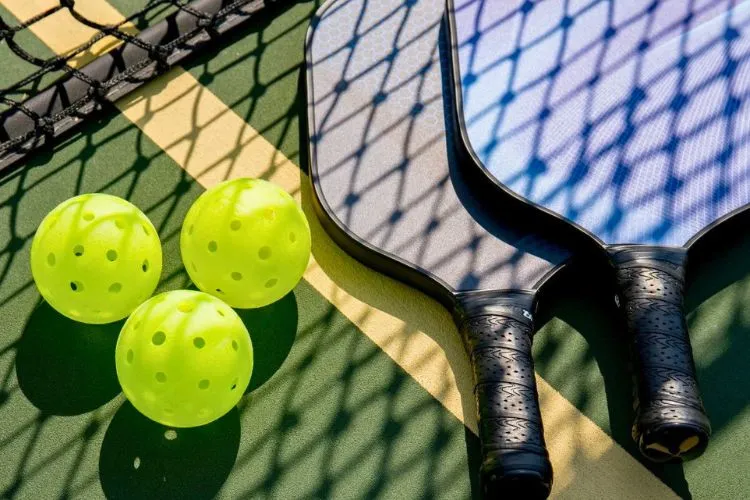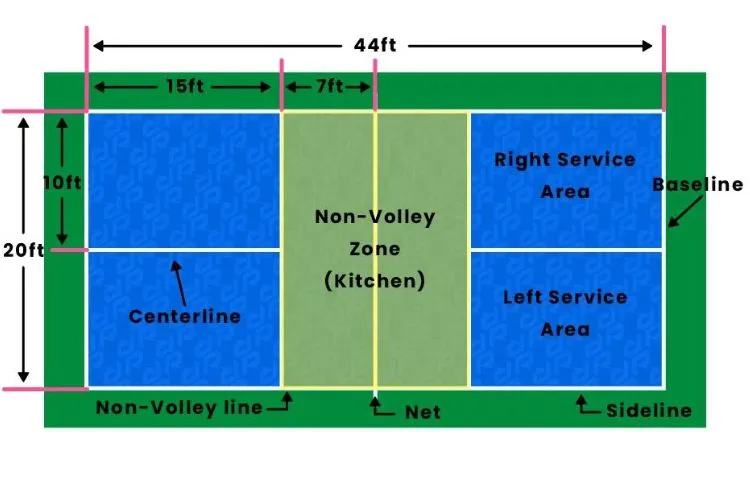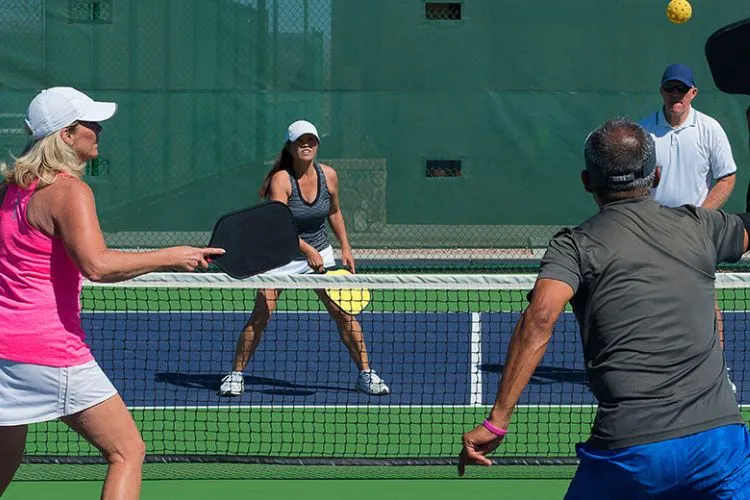Pickleball, a Pickleball sport that combines elements of badminton, table tennis, and tennis, has surged in popularity across the United States and beyond.

Among the various strategies and moves utilized in this intriguing sport, one question often pops up: Can you spike in pickleball? This article delves into the legality, technique, and nuances of spiking in pickleball, offering everything from beginner tips to expert strategies.
Can You Spike in Pickleball?
The short answer is yes, you can spike in pickleball, but with certain conditions and rules applied.
A spike in pickleball is a powerful, downward hit, executed with the intention of making it difficult for the opponent to return the ball.
However, the execution of a spike is closely governed by pickleball’s unique rules—specifically concerning the no-volley zone and the 2-bounce rule.
Understanding the No-Volley Zone (The Kitchen)
Central to mastering the art of spiking in pickleball is understanding the no-volley zone, often affectionately termed “the kitchen.” This area extends 7 feet on either side of the net and is a space where players are not allowed to hit the ball out of the air before it bounces (a volley).

When it comes to spiking, the no-volley zone introduces a significant constraint: players must ensure they remain outside this zone when performing a spike. Thus, while spiking is allowed, doing so from within the kitchen or stepping on the kitchen line during the act results in a fault.
The 2-Bounce Rule and Its Impact on Spiking
Another rule integral to the game is the 2-bounce rule, which requires the ball to bounce once on each side of the net before volleys can begin during a point.
This rule directly impacts the strategy behind spiking, as it creates a rhythm to the game that players must navigate.
After the 2-bounce rule has been satisfied, and play opens up, opportunities for spiking can arise. Players must then skillfully decide when a spike is not just legally feasible but also strategically sound.
Techniques for Effective Spiking
Executing a powerful spike in pickleball isn’t just about physical strength; it involves precision, timing, and strategic insight. Here’s how you can master this skill:

- Positioning is key. To avoid the no-volley zone fault while still being effective, position yourself just behind the kitchen line. This stance allows for a downward trajectory on the ball without violating rules.
- Timing your spike is crucial. Watch the ball closely and choose to spike when the ball is at its peak height to generate maximum power and control.
- Practice your swing. A good spike comes from a combination of wrist snap and arm strength, focusing on hitting the ball’s center to maintain control over its direction.
Defending Against Spikes
Knowing how to effectively defend against spikes is as important as executing them. Players faced with a spike have a split second to react, and hence, anticipating a spike is often the best form of defense.
Keep an eye on your opponent’s body language and paddle position—they often signal an impending spike. Positioning yourself slightly farther back from the net can also give you extra time to react to a spike, increasing your chances of a successful return.
Pro Tips Section
- Practice Makes Perfect: Regular practice of your spike technique, including aim, power, and positioning, is vital. Use drills to improve your accuracy and power.
- Watch and Learn: Observing advanced players and how they execute or defend against spikes can offer invaluable insights into effective techniques and strategies.
- Stay Focused and Flexible: A successful spiker knows when to spike and when to opt for a different strategy. Stay adaptable and read the game carefully to make your spikes count.
Spiking in pickleball, when executed correctly, is not just a demonstration of power but a testament to a player’s strategic and technical ability.
As the sport continues to grow, so too will the techniques and strategies around effective spiking. So, grab your paddle, and let’s hit the court!
Frequently Asked Questions (FAQs)
Can you execute an overhead spike in pickleball?
Yes, overhead spikes are allowed and are a common sight in pickleball games. The same rules apply, particularly regarding the no-volley zone.
How does the no-volley zone restrict spiking?
Players must ensure their feet do not touch the no-volley zone during or immediately after the spike. This limitation requires skillful footwork and positioning to execute legal spikes.
What’s the best way to defend against a spike in pickleball?
Anticipation, positioning, and quick reactions are key. Standing a bit farther back and being ready to move in any direction can enhance your defensive play against spikes.
Conclusion:
Pickleball is a game of precision, strategy, and skill, with spiking serving as one of the many techniques players can utilize to gain an edge over their opponents.
By respecting the rules, honing your technique, and incorporating expert tips, you can transform your spiking ability into a key component of your playing style.
Whether you’re a beginner eager to learn the basics or an experienced player looking to refine your skills, understanding the ins and outs of spiking in pickleball is essential.
Remember, practice, patience, and perseverance are your best allies on the path to mastering this exciting aspect of pickleball.

Pickleball’s more than a game to me—it’s a passion. I write, sharing its highs and lows, the thrills and the lessons. Some tales might draw you to the court, while others give a hint of the game’s magic. So, curious about my journey? Ready to dive deep into the world of pickleball with me? Let’s go.
